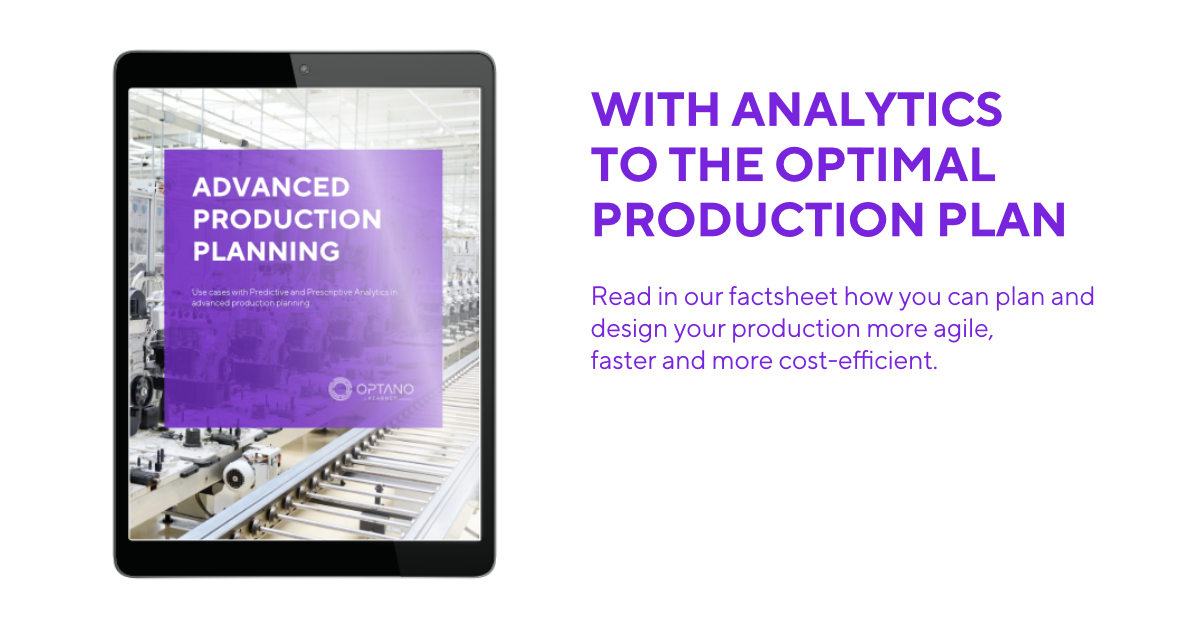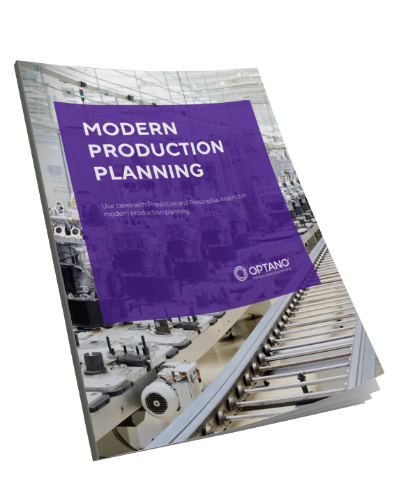Typical mistakes in production planning
Who hasn’t had one of those days where everything just seems to go wrong? For example, you start the day by dropping your toast – on the buttered side, of course. Then you miss the train by a millisecond or you step into dog excrement on the way to an important appointment. Who isn’t reminded of Murphy’s Law on days like these?
In the original, long version Edward A. Murphy said the following:
„If there is a possibility of several things going wrong, the one that will cause the most damage will be the one to go wrong.“
This may appear fatalistic at first sight – as if no matter what we do, it will go wrong anyway. However, we can also interpret it in another way – the more prepared we are and the fewer opportunities we allow for mistakes, then the less chance there is of something going wrong.
Especially in the complex process of production planning there are many traps and sources of error which can lead to problems. But in many of these cases there are ways and means of minimizing the risks they can create. Here we present five planning production challenges and how they can be avoided.
A lack of knowledge about the stock
Even the best production plan will not work if the necessary resources are not available. Even if this may seem perfectly logical at first sight, communication among purchasing, storage and production is not standardized in many companies. On the one hand, this leads to problems in production as it has to reschedule yet again due to a lack of resources. On the other hand, it often leads to warehouse capacity being taken up by resources which are not required at the present time. Therefore, communication between all departments is vital – only then can you have a functioning production plan.
The parts list and work schedule are (no longer) correct
Production plans are based to a great extent on the parts list and work schedule. If these are incorrect, problems in production are inevitable. If the information on the required material and work tools, but also the estimated set-up times and required workers’ skills differs from the actual requirements, the production plan is doomed to failure. Therefore, it is essential that this preliminary work can be adjusted in the event of any changes for well-planned production.
Risk factors are not identified and considered
Theory and practice often go their separate ways. Often, certain production stages actually take longer than had been planned in theory. Also, a high scrap rate, which had not been considered in advance, can lead to the rework of a product each time. This new production order then has to be rescheduled and usually very promptly. If you monitor production for this type of data and use it to provide realistic time and material requirements for planning, you will quickly find that production planning is more realistic and thus requires less rescheduling.
Changes are not anticipated
Unscheduled changes are a challenge for any production planner and they occur whether we want them or not. For this reason it makes sense to consider any possible changes in advance and be prepared for them. All the departments involved must be well-equipped to deal with planning changes. Furthermore, having a working atmopshere in which this part of production is accepted and not regarded as an additional burden, can help to cope with any unscheduled changes.
Lack of information on future demand
Foresighted production planning means knowing what will be needed in the future. Which products will be required more, and which less? Will new products need to be added? How will these changes impact production planning? With the appropriate methods very precise forecasts can be made on the basis of historic data. And if you know exactly what is going to happen in the future, then you can apply this knowledge effectively today.
More interesting articles
OPTANO production – Next-level planning
With OPTANO production you can avoid mistakes like these and take your planning to the next level.
Here at OPTANO we deploy mathematical optimization to find optimal solutions to a wide range of complex problems, thus helping companies to get the best out of their available resources and data.
With the help of Prescriptive Analytics, mathematical optimization applications like OPTANO capture your real-world business problems, including all your objectives, variables and constraints, in a mathematical model. Then, using special solvers, it can generate the optimal solution to your planning problems.
By deploying OPTANO Production, you will not only benefit from the sophisticated algorithms of mathematical optimization but also from our employees’ know-how and many years of experience. We know what counts in production planning and where problems frequently arise.
If you would like to learn more about the possibilities mathematical optimization provides in production planning, simply download our factsheet “Advanced Production Planning Using Predictive and Prescriptive Analytics“.
Or you can contact us directly: Dr. Sven Flake would be glad to answer any questions you might have on the issue of optimal production planning.
All’s well that ends well!
Don’t worry, things don’t go wrong all the time. The fact that we think they do is more of a psychological phenomenon than anything else. Selective perception and memory make us perceive mishaps more frequently and they are more present in our memories. Therefore, the way we think sometimes isn’t all that bad – but being well prepared and avoiding potential mistakes in advance is still a good plan.
Do you already know our factsheet on the topic?

In our factsheet Advanced Production Planning we present some of the use cases of Predictive and Prescriptive Analytics in modern production planning which you can download here.
To obtain our factsheet, all you need to do is enter your contact details in the space below. A pop-up window will then open to download the whitepaper. Please note that by providing us with your email address, you agree that we may contact you on this topic. You may revoke this agreement at any time by contacting privacy@optano.com.







